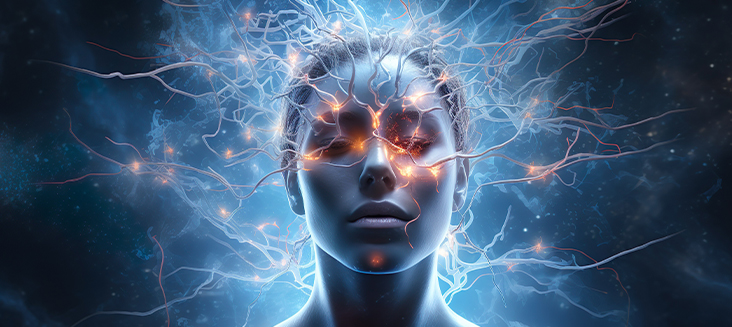Free Case Evaluation

Trauma as a Cause of CRPS
Understanding how injuries may lead to complex regional pain syndrome
Complex regional pain syndrome (CRPS) can appear for a number of reasons, not all of which are well-understood. However, in most cases, CRPS presents following an injury or a medical procedure. The injury doesn’t need to be particularly serious for the condition to develop. Needle injections, sprains, fractures, and immobilization are all potential causes despite being relatively common injuries. Pain caused by CRPS is disproportionate to the severity of the trauma and continues long after the initial injury is expected to heal. The first signs of CRPS may appear around four to six weeks following the incident that caused the original injury.
It’s important to understand the potential causes of CRPS because early diagnosis leads to better long-term outcomes for patients.
Table of contents
- Types of trauma linked to CRPS
- How trauma can lead to CRPS
- Type 1 vs. Type 2 in the trauma context
- CRPS red flags following traumatic injuries
- Pediatric trauma and CRPS
- Documentation after trauma
- CRPS evaluation for trauma patients
- Importance of early management after trauma
- Prognosis for patients with trauma-associated CRPS
- Why CRPS patients may need a lawyer
Types of trauma linked to CRPS
The types of injuries associated with CRPS are often relatively minor. Here are some of the initial traumatic injuries that might lead to this condition.
- Fractures: Fractures and surgeries are among the most common triggers associated with CRPS. Wrist and ankle fractures are more likely than others to lead to the condition.
- Sprains, strains & soft-tissue injuries: These seemingly minor injuries typically heal and resolve without long-term complications. However, they are one of the potential causes of CRPS.
- Crush injuries & lacerations: These types of injuries can cause severe tissue damage, which creates a risk of nerve irritation and compression. Possibly as a result of this, CRPS can also occur following these injuries.
- Surgery: Surgical procedures, especially of the extremities, can be followed by CRPS (although such outcomes are uncommon).
- Needle injections and IVs: Although rare, there are cases where these procedures can trigger nerve irritation or direct injury.
- Immobilization and casting: Casts that are too tight and prolonged immobilization after trauma are also flagged as possible causes of CRPS.
How trauma can lead to CRPS
CRPS only appears in a minority of trauma cases. Studies continue to investigate why injuries sometimes lead to this condition. Some of the identified causes include:
- Inflammation: Exaggerated local inflammation during the early phases of an injury may be a factor.
- Peripheral nerve injury or small-fiber dysfunction: The nerves do not need to be seriously damaged or severed; even small-fiber damage or scarring can sensitize nociceptive pathways.
- Sympathetic nervous system dysregulation: Abnormal vasomotor and sudomotor responses, which may explain temperature and sweating asymmetry, are also a factor in many cases.
- Central sensitization and brain changes: Some patients may experience altered pain processing and sensorimotor maps. This factor could also explain the features of allodynia, hyperalgesia, and movement disorders.
- Possible immune/autoantibody roles: Some studies now suggest involvement of the immune system, but this is not yet definitive.
Type 1 vs. Type 2 in the trauma context
There are two main categories of CRPS: Type 1 and Type 2. CRPS Type 1, also referred to as RSD, follows trauma in cases without any confirmation of major nerve injury in tests. This type often presents with a region-wide distribution, sometimes described as a “glove” or “sock” distribution.
CRPS Type 2 is also referred to as causalgia, and it follows trauma with confirmation of a nerve injury that presents in tests. The pain and sensory changes in these cases may follow a nerve distribution rather than a regional distribution.
When a doctor suspects a focal nerve injury, they may use magnetic resonance neurography (MRN), which can help identify post-surgical scarring or focal nerve signal changes. However, it’s worth noting that this is not a general diagnostic test for CRPS.
CRPS red flags following traumatic injuries
Patients who have suffered a traumatic injury should speak to their doctor right away if they experience the following symptoms of CRPS:
- Pain that intensifies or persists: Pain after an accident or injury is normal. However, if it continues or worsens after the expected tissue healing timelines, it may be a sign of CRPS.
- Allodynia: This symptom involves pain from something that shouldn’t hurt. Examples include pain in the impacted region that is triggered by a light breeze or contact with clothing.
- Hyperalgesia: This symptom is similar to allodynia, but it’s an exaggerated sense of pain in the region to something that shouldn’t hurt that badly, such as a pinprick.
- Vasomotor changes: Another sign is temperature asymmetry that is greater than 1°C, or color changes that appear red, purple, or pale.
- Sudomotor or edema: Swelling and sweating asymmetry that extends beyond routine post-trauma patterns is another possible symptom of CRPS.
- Motor or trophic: Symptoms like stiff joints, tremors, weakness, and changes to skin, hair, and nails that emerge over weeks can also be a possible sign of CRPS.
Anyone experiencing these symptoms following an injury should ask their doctor about CRPS and possible early interventions.

Pediatric trauma and CRPS
Children under ten rarely receive a CRPS diagnosis, but it is more common in teens. Sports injuries, sprains, and other minor forms of trauma may trigger the condition in this demographic.
The symptoms and signs of the condition in children are similar to the presentation in adults, including prolonged pain and sensory and autonomic changes. It’s important that children receive treatment through interdisciplinary pediatric pain programs to improve recovery outcomes.
Documentation after trauma
Following an injury, documenting your symptoms can help establish the cause and aid in diagnosing the condition. Some things to consider include keeping a symptom diary that records the onset date, pain scores, triggers (such as cold, touch, or movement), color and temperature changes, and any episodes of swelling. If you experience any reduction or loss of function, such as declining grip strength, walking distance, or school/work participation, include that in your journal as well.
Beyond journaling, take photographs of any visible symptoms, such as asymmetry in color or swelling. Make sure to include date stamps on those photographs.
Also, keep a log of any medication you take or therapy you undergo to support your recovery. Note what seems to help, what doesn’t, and any side effects.
CRPS evaluation for trauma patients
There are no blood tests or scans that can definitively identify or rule out CRPS, which means that it remains a clinical diagnosis. Clinicians apply the Budapest Criteria, which assess the patient’s experiences, including disproportionate pain and symptoms in four categories, and the examiner’s observations.
While tests can’t diagnose CRPS, providers may perform tests to rule out other conditions that could have similar symptoms. That workup may include an ultrasound for DVT/arterial issues, labs for infections and inflammation, and nerve conduction studies if doctors suspect neuropathy. Imaging studies can also be helpful, including MRN exams if providers believe the patient may have focal nerve entrapment or post-surgical scarring.
Importance of early management after trauma
Early, multi-modal care has shown the ability to improve the chance of remission in patients with CRPS. Physical therapy and occupational therapy are often effective for improving function and desensitization. Medications that may be prescribed early include short-course oral corticosteroids and bisphosphonates in the early stages of the disease. Evidence supports pain reduction benefits in some patients.
Neuropathic agents are often used, but there is mixed evidence of success in CRPS for neuropathic pain. There are other interventional options in cases that persist following initial treatments.
There are also some ways to potentially reduce the risk of developing CRPS. According to the Mayo Clinic, treatment with vitamin C following wrist fractures shows mixed results, but it is worth discussing with a doctor. It’s also best to ensure that casts aren’t fitted too tightly, as this can pose a potential risk.
Prognosis for patients with trauma-associated CRPS
While outcomes vary, some patients with CRPS do improve with treatment. However, some individuals develop severe, chronic symptoms. Earlier diagnosis and active rehab both show the ability to improve a patient’s chances of a positive outcome. In patients with a “warm” pattern who are earlier in the course, outcomes tend to be better than those with a chronic “cold” pattern of CRPS. Upper-extremity involvement is often a greater risk than lower extremity cases.
Why CRPS patients may need a lawyer
Traumatic causes of CRPS may include accidents that result from someone else’s negligence. For instance, a slip and fall on a wet floor in a shop could result in CRPS. Or a car crash that causes a broken leg could lead to the condition. In such cases, the victim of that original accident may suffer initial injuries followed by long-lasting chronic CRPS. The financial, emotional, and physical costs of such an outcome are immense. However, proving CRPS as part of your damages can be challenging.
At the CRPS Law Firm, we offer compassionate support and fierce legal representation to those who suffer from CRPS as a result of someone else’s negligence. If you or your loved one sustained a traumatic injury that led to a diagnosis of CRPS, reach out to us today.

